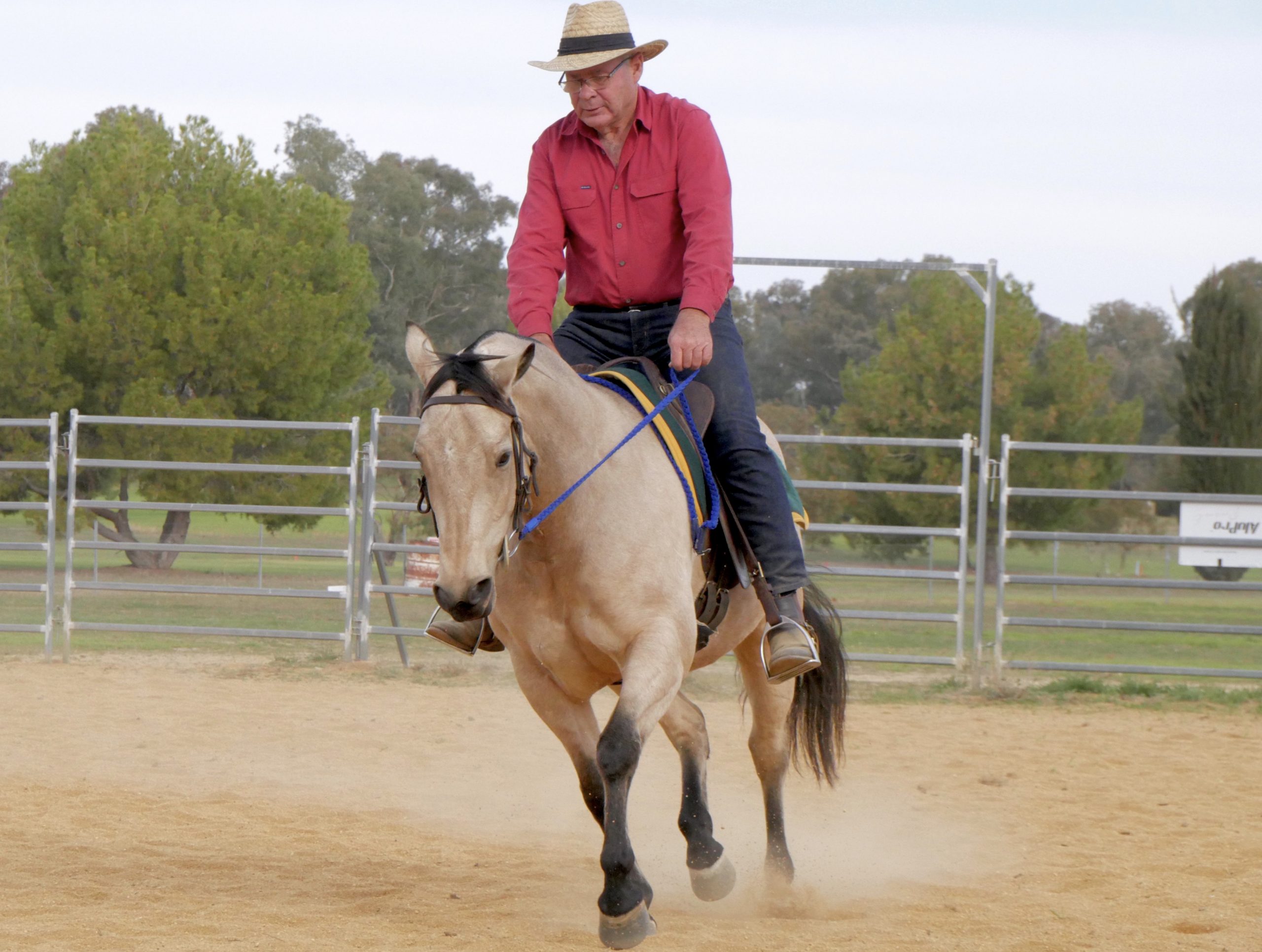One of the most misunderstood problems that people have with their horse is shying.
There are all sorts of old wives tales about why horses shy and what to do about it.
Lots of trainers say that the best thing to do for shying is allow the horse to stop and look so he can see there’s nothing to worry about.
Some trainers even allow the horse to approach slowly and sniff the offending object.
It’s also said that if you flap things around your horse, he’ll get ‘used to’ flapping objects and won’t shy at flags, banners, umbrellas etc. in the future.
This thinking is flawed because horses don’t reason in this manner.
Allowing your horse to stop and look, or approach and sniff things won’t stop him from shying.
And neither will flapping things around him.
When you’re in the middle of a dressage test, you don’t want your horse to stop and look and sniff the judge’s car or an arena marker or a flower pot.
When you’re half way around the second peg in a campdraft, you don’t want your horse to look at the banner flapping on the fence.
When you’re riding down the road, you don’t want your horse to stop or move sideways every time he sees something new.
At some point, every horse will want to shy away from a noise or something that he sees in the bushes.
He may want to stop and look at things that ‘worry’ him.
When your horse does this, his concentration goes away from what you want and onto what he wants to do.
If you allow this to happen, your horse will soon learn to stop and look and shy whenever he feels like it.
You can allow this or you can teach your horse that even though he’s a little worried, he must still do as you ask.
He must move exactly where you ask, in the gait you ask, at the speed you ask.
When your horse concentrates on these three simple things, he won’t shy or stop and look.
Whenever you ride or work with your horse, he must concentrate on you and what you want.
He should have one ear back ‘listening’ to you at all times.
He should try his hardest to work out what you want him to do.
If his concentration goes onto something flapping on the fence, it means he’s stopped thinking about you and what you want.
And it means you’re no longer in control.
Understanding this is one of the biggest breakthroughs you can make with your horse.
That’s why it’s an integral part of my training.
Never confront your horse with things that worry him.
Instead, you must gain more control and not allow your horse to look at things.
If your horse is worried by something flapping on the fence, keep away from it and don’t expose him to it.
Come back to basics and gain more control.
Ride in an area without any distractions and teach your horse to move correctly in a circle.
Your horse must concentrate on you at all times.
Next lesson, ride in the same precise circles and move a little closer to the worrying item.
Don’t make a confrontation.
Make sure both you and your horse concentrate on moving in correct circles.
It may take a few lessons but eventually you’ll be able to ride your horse past the flapping item without a drama.
Whenever and wherever you ride, you must concentrate on your horse at all times.
Immediately he pricks his ears and looks away, you must take hold of him and touch him with your leg to tell him that he must concentrate on you and what you want.
If you’re consistent, your horse will soon learn that what you want is much more important than shying or stopping to look at things.
If you’d like to learn more, my book is the best place to start. Learn how to build your horse’s confidence without confrontation or force.
Here’s what one reader had to say:
“Already taken your advice on spooking – fantastic! Distraction and getting the horse to do other stuff as soon as that gait slowed and the head went up – worked so
well – without horse or rider getting to the point of being scared and wanting to bail out! Thanks for another addition to my ‘toolbox’ Neil.”
– Sarah Van De Sandt

